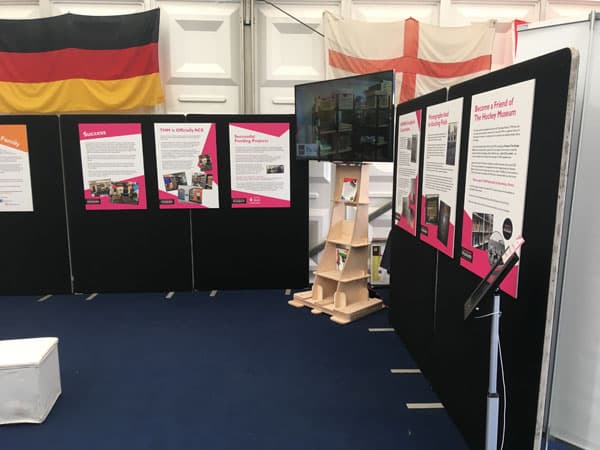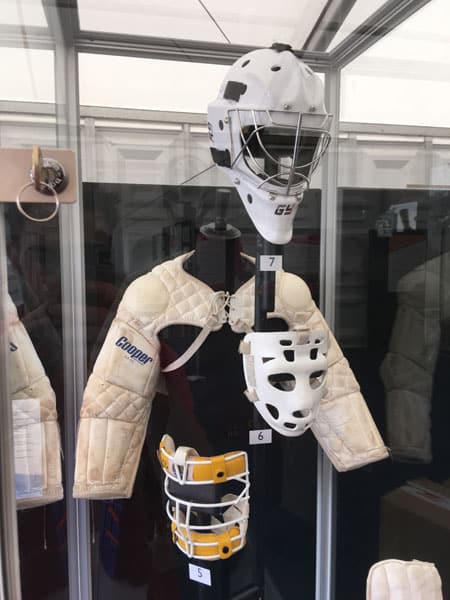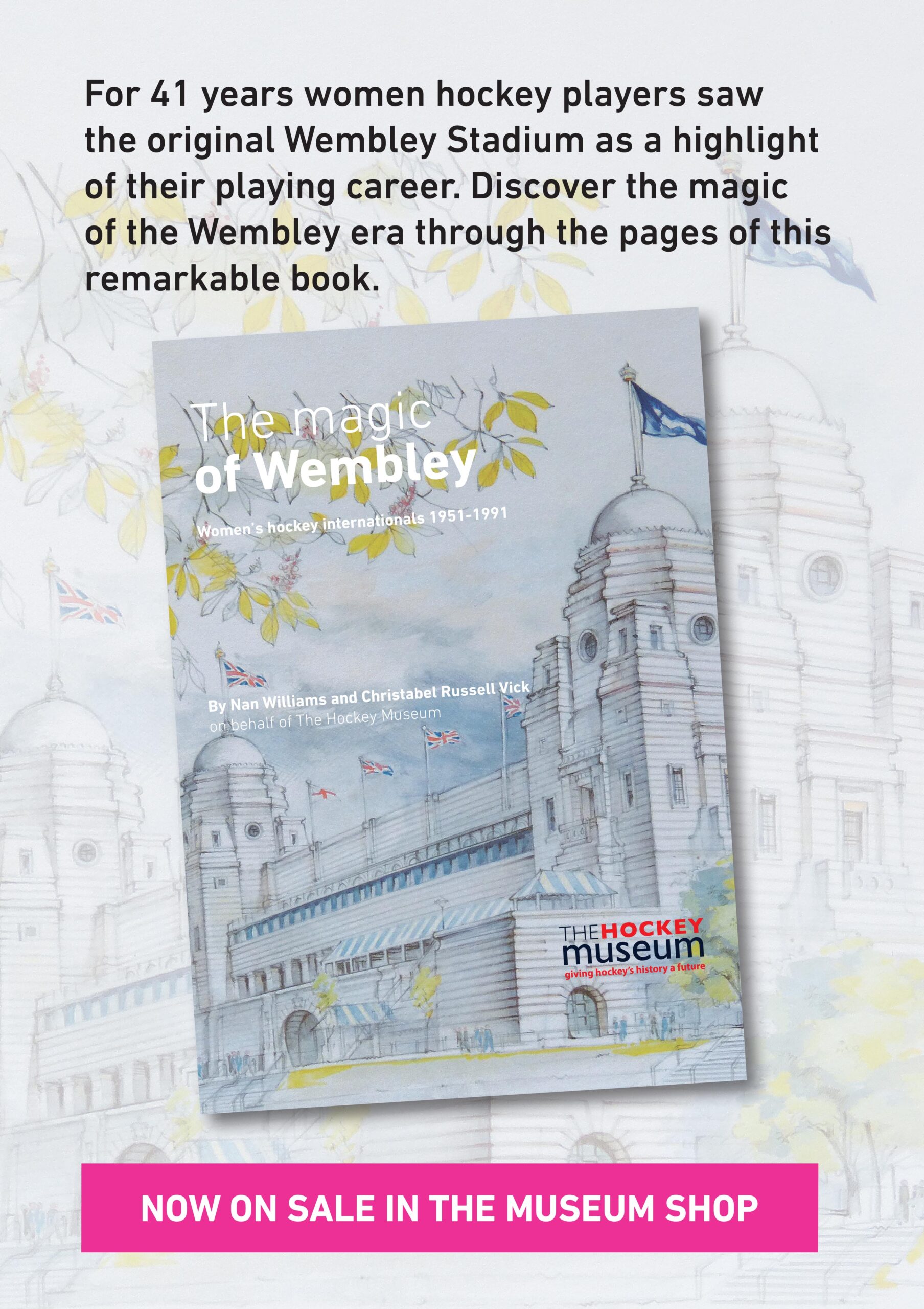 |
 |
In July 2018 THM put on its most successful exhibition to date in the Fan Zone at the Vitality Hockey Women’s World Cup in London. The exhibition was in a large marquee and comprised six sections, each characterised by a key word reflecting the work of THM and the sport of hockey. These sections were:
Origins – examining hockey’s links to the women’s suffrage movement in the late nineteenth and early twentieth centuries, complete with an arts and crafts table where children could make their own placards to champion a cause or team.
Respect – drawing on ideals of mutual respect and fair play exemplified by the elite athletes competing at the World Cup, this area of the exhibition brought together historical hockey stories and profiles of significant players from the competing nations as well as a special, guest-curated photography exhibition celebrating 50 years of Indian women’s hockey.
Inspire – an exploration of the inspirational hockey goalkeeper, from the iconic figures we are familiar with today resplendent in their body armour and helmets, to the canvas-padded and sweatshirt-wearing bravado of yesteryear.
Evolution – compared and contrasted the 2018 World Cup with the previous two women’s world tournaments held in the UK (Folkestone 1953 and Edinburgh 1975) using film footage, kit and equipment from the three different eras, and photography and statistics to illustrate the evolution of the organisation of such international events.
Family – an opportunity for visitors to be photographed alongside their family and friends with the newly designed World Cup trophy and to tell us about their friendships within hockey, aka ‘the hockey family’.
Success – presenting the progress and growth of THM in recent years by highlighting some of its successful projects and achievements, and in doing so making the case for financial support from the visiting public and encouraging sign ups to the Friends of The Hockey Museum fundraising initiative.
 |
 |
The World Cup exhibition, which was designed to appeal to audiences of all ages, included traditional object and text-panel displays alongside audio, video and interactive exhibits (listening posts, large screens and even a virtual reality headset) to bring the history of hockey to life in a varied and accessible manner.
The exhibition attracted over 10,000 visitors during the two weeks of the tournament – a record for the museum by some distance. The exposure generated and its promotion of THM’s important work to celebrate and preserve hockey’s history and heritage cannot be understated. And pleasingly, hockey history was noticeable throughout the event, from the TV commentary to the Walk of Stars. Our thanks to England Hockey for the opportunity and for their continued support.








